I still remember the first time I saw a Laurent Ferrier watch like it was yesterday; I was left with such an impression that I fail to believe that that encounter will ever be one which fades into relative anonymity.
I have had only few such encounters that I can recall so vividly, each having left a somewhat permanent etch on my personal journey with watches: I remember trying on the Roger Dubuis Knights of the Round Table II in Harrods; my first visit to Max Büsser’s M.A.D Gallery in Geneva; and of course, on that very same (formative) trip to Geneva, the first time I tried a Laurent Ferrier watch.
I wrote about trying the Laurent Ferrier watches in one of my earliest blogs (which also, coincidentally, includes the visit to the M.A.D Gallery):
“We passed a boutique and I happened to notice a particular brand on the sign outside which clearly warranted a quick look … So, which brand was it that caught my attention? Laurent Ferrier – a brand I knew was special, yet not one which I knew a great deal about.
“I knew Laurent Ferrier was a master watchmaker, but what I didn’t appreciate was that he was a master watchmaker at Patek Philippe and even their technical director before starting the Laurent Ferrier brand in 2010. I knew he was a racing driver, too, but what I didn’t appreciate was that he was a semi-professional racing driver who finished third in the 1979 Le Mans race, behind none other than Paul Newman.
“The attendant walked me through four different Laurent Ferrier timepieces and a little about their stories, and I was fortunate enough to be able to try them all. He explained how, as a client of Laurent Ferrier, he could even arrange for you to visit the man himself at his manufacture and discuss in person what you are looking for in a timepiece, perhaps even over dinner! Imagine that: being able to discuss in person, with an absolute watchmaking master, what you are looking for in a timepiece for it to then be made, by hand, especially for you. Quite something.”
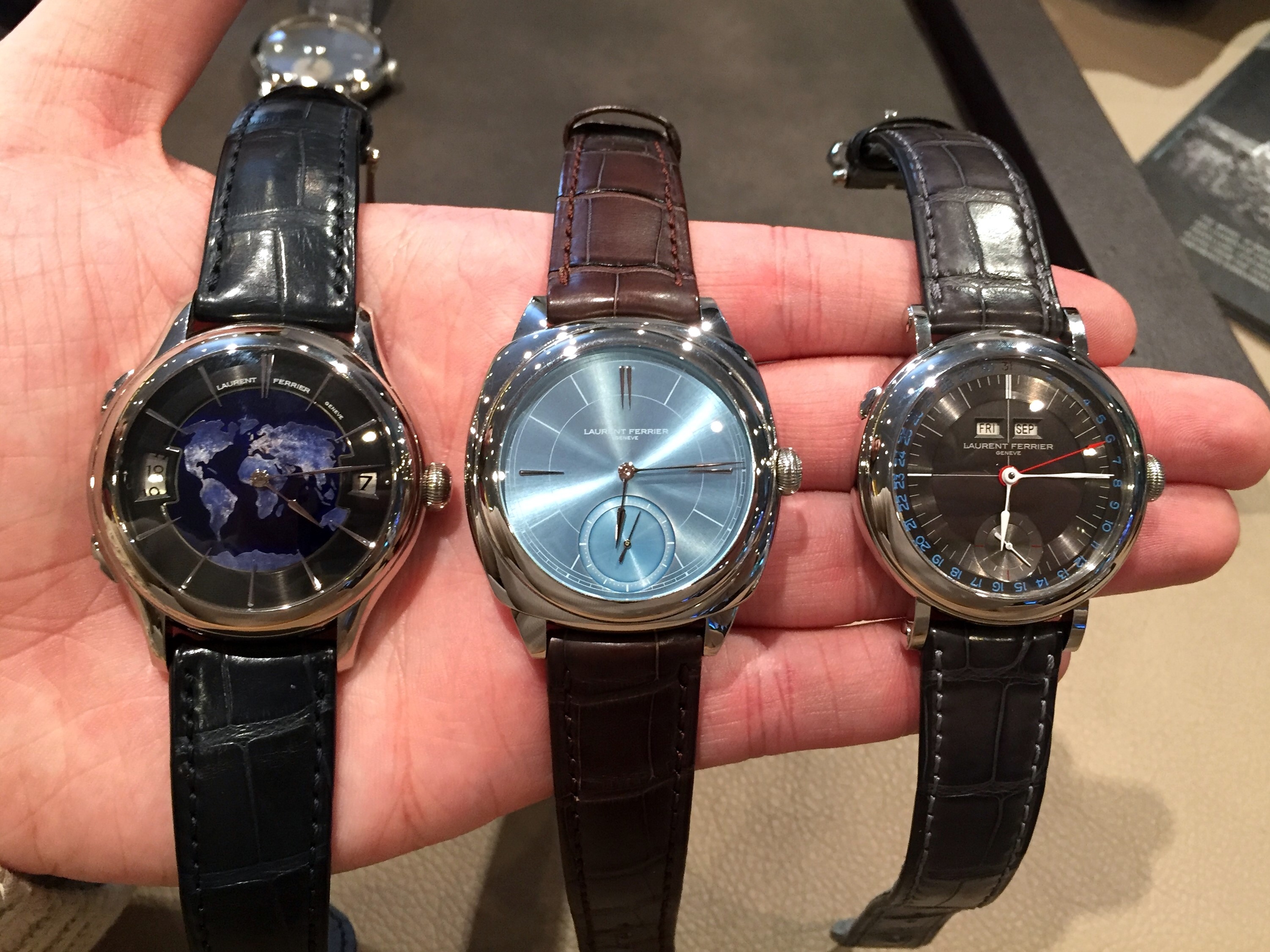
Three of the four Laurent Ferrier watches I saw in 2019 in Geneva
My interest somewhat snowballed from that experience, and I can distinctly remember after handling the watches and seeing the quality for myself, wondering why there wasn’t a wider interest in the brand. It feels only right to me that a few years on, there is now a growing interest in Laurent Ferrier, along with independent watchmaking in general.
Today, I think it is probably the watch brand which resonates with me the most on a personal level; as such I enjoy writing about Laurent Ferrier frequently, having done a profile of the brand, as well as writing up my visit to their manufacture / atelier in Geneva, too.
Despite all this, however, one watch that I had not managed to be able to see in person was the Laurent Ferrier Classic Origin – typically the one which is my favourite! It was launched in 2020 to celebrate the 10th anniversary of the Laurent Ferrier brand, introducing a brand new, in-house movement as well as a grade 5 titanium case for the first time.
Since the first opaline dial model (ref LCF036.T1.G1G), there has been one limited edition ‘Série Atelier’ green dial edition (ref LCF036.T1.VG), limited to just 30 pieces and long since sold out, and this year saw the launch of a stunning blue dial model (ref LCF036.T1.CG)– one of my favourite releases of Watches & Wonders.
With Laurent Ferrier producing only a few hundred watches a year to date, spread across their entire collection, there obviously aren’t very many examples to be able to get hands on with. However, when in Geneva a few weeks ago, I was incredibly lucky to be able to spend some time with not only the Classic Origin opaline dial, but one of the new stunning blue dials as well. And so, of course, I wanted to share this experience!
Laurent Ferrier Classic Origin – Opaline and Blue Dial
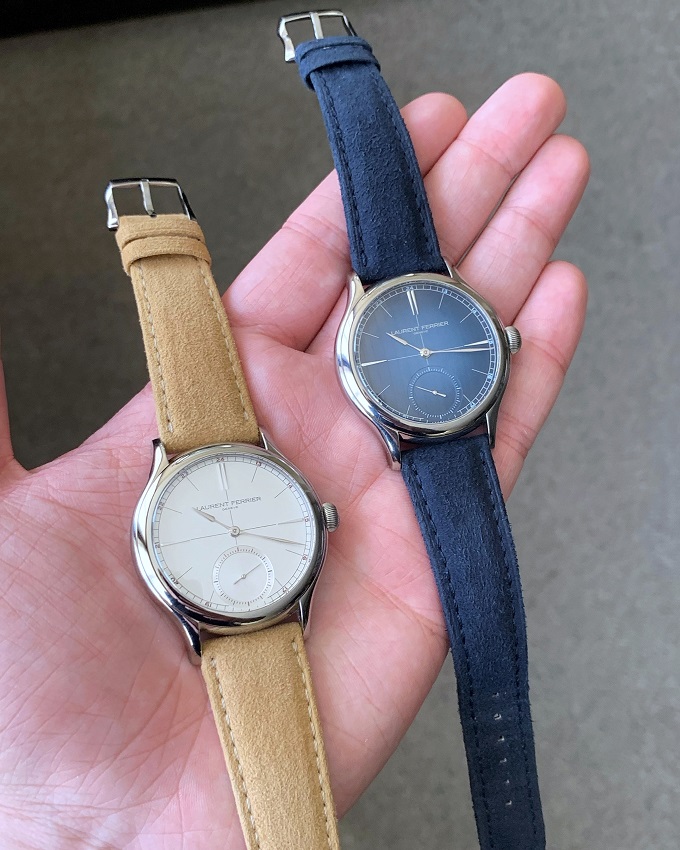
Laurent Ferrier Classic Origin Opaline and Blue
The moment that the presentation tray was brought over, complete with both watches side by side, I could feel myself starting to smile straight away. And that’s always a pretty good sign to start with.
These really are magnificent watches.
Handling the Classic Origin for the first time took me back to my first encounter with Laurent Ferrier in 2019 – the case, the sector dial, the finish of the manual-wind LF116.01 movement… everything was new ground for me with the brand, and I loved exploring it.
Comparing the opaline and blue dial watches side by side, they have a totally different character. The opaline dial felt to me to have more of an air of formality about it owing to the classicism of the colour, in contrast with the deep blue dial which almost serves to “take the edge off” for want of another phrase. The blue colourway seems to de-formalise the aesthetic a little, making it a little more casual.
I haven’t seen the green ‘Série Atelier’ reference in person to say for sure, but from the photos I have seen, I anticipate it leaning more towards the casual aesthetic, too.
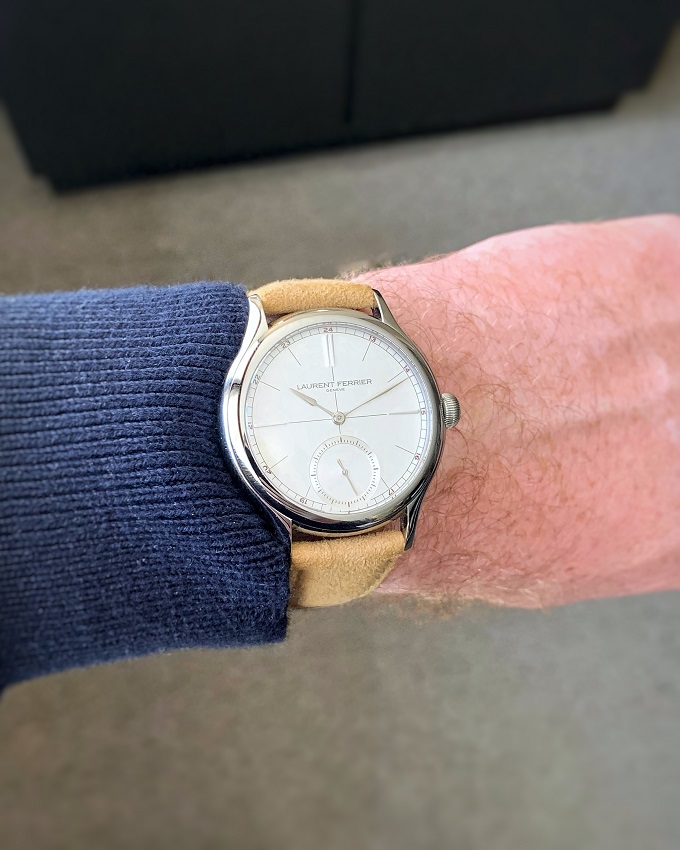
Classic Origin Opaline Dial LCF036.T1.G1G
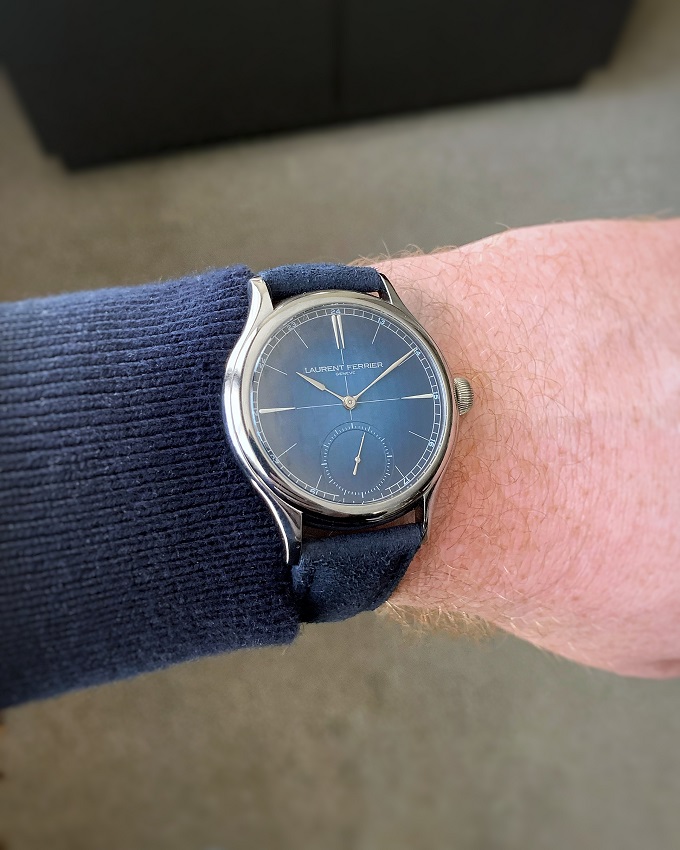
Classic Origin Blue Dial LCF036.T1.CG
The dial design is beautifully symmetrical. Batons are used for hour markers – the 12, 3 and 9 done with a super-thin, applied 18k white gold baton, and double-baton for 12, with the remainder of the hour markers painted on. The sector dial is split into four quadrants, and the decorative markings for this match exactly with the painted hour markers, both in terms of colour and width, which helps to tie the design together (the same colour is also used for the Laurent Ferrier logo, although it is a little thicker such that it stands out a little more).
At the 6 o’clock position is a central small-seconds dial, which is handsomely proportioned so that it is easy to read the seconds hand – I think quite often that a small seconds dial is one which is quite easy to make too small, or too discrete, but to my eye the Classic Origin gets this just right.
A hallmark of Laurent Ferrier is the use of the so-named Assegai hands, also made from 18k white gold. Depending on how the light hits the watch, you often get a pop of brightness on the hands as well as the 12 3 and 9 batons, which are balanced out by the pop of brightness on the small seconds hand at the 6 o’clock position.
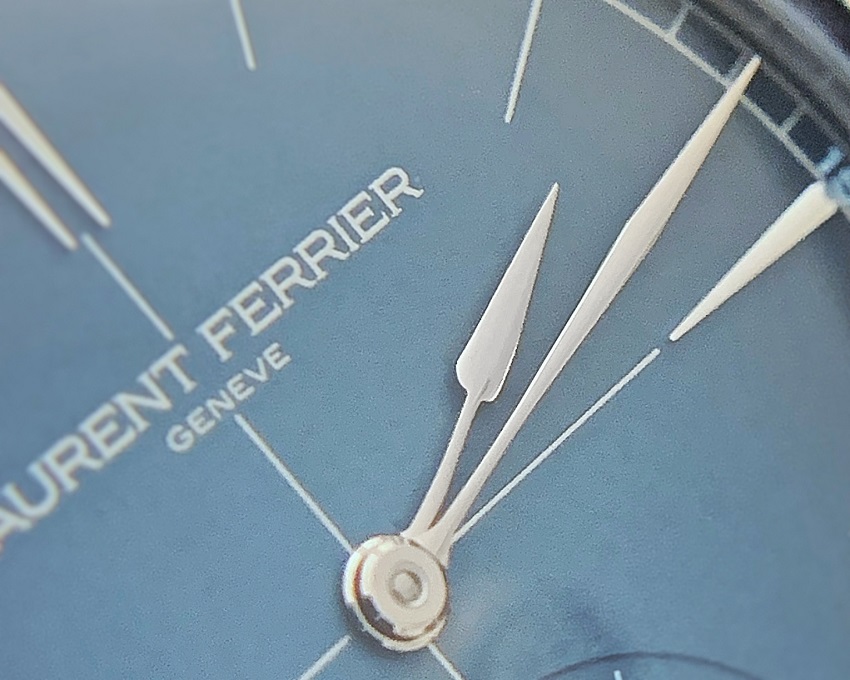
Assegai hands
To my eye, the balance of the dial on the Classic Origin is pretty much perfect, and testament to the design cues employed by Laurent Ferrier. The quality checking of these dials must be absolutely on point, too – if even one decorative line or baton on the dial is remotely out of place, the whole thing would be out of kilter. I am glad to say, no such issues!
One obvious addition with the Classic Origin blue dial (and the green ‘Série Atelier’ for that matter) is that it introduces a gradient dial in contrast to the ‘solid’ opaline dial, fading from a lighter shade of blue in the centre of the dial to a slightly darker shade on the periphery.
I am pretty sure that the lighter shade in the centre of the blue dial is the same colour (or very close) used for both the small seconds markers and the discrete 13-24 scale, which adorns the hour markers outside of the minute track for those who prefer a 24-hour time. This is another vehicle used which I think serves to tie the design together.
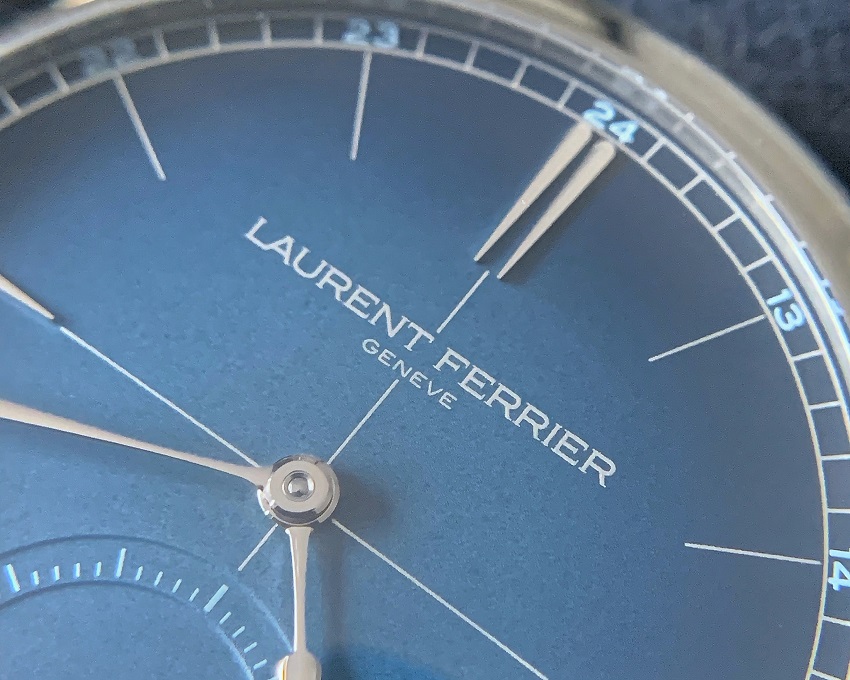
Gradient dial of the Classic Origin Blue and double baton hour markers for 12
It was interesting to me that with the Opaline dial, where the choice of colour for the small seconds markers and 13-24 scale was a burgundy/red, that this red didn’t appear to be anywhere near as prominent as the photos and renders of the watch available online might suggest.
For the Classic Origin, there was only ever going to be one of the Laurent Ferrier case families used – the ‘Classic’ case – fittingly as an anniversary collection, the same case used for the first watch released by the brand. However, as I mentioned earlier, with the Classic Origin, this case was presented in polished grade 5 titanium, marking the first time this material had been used by Laurent Ferrier.
At 40mm in diameter, and just 11.1mm thick, the watches wear incredibly well. For me, it is the perfect size, and after having it on your wrist for a little bit it is so light and comfortable that you almost forget it’s there, even more thanks to the leather and alcantara strap with titanium pin and buckle, chosen for comfort.
That said, with 30m water resistance, it is worth keeping in mind that it is on your wrist – you certainly don’t want to forget it is there and go jumping into a pool!
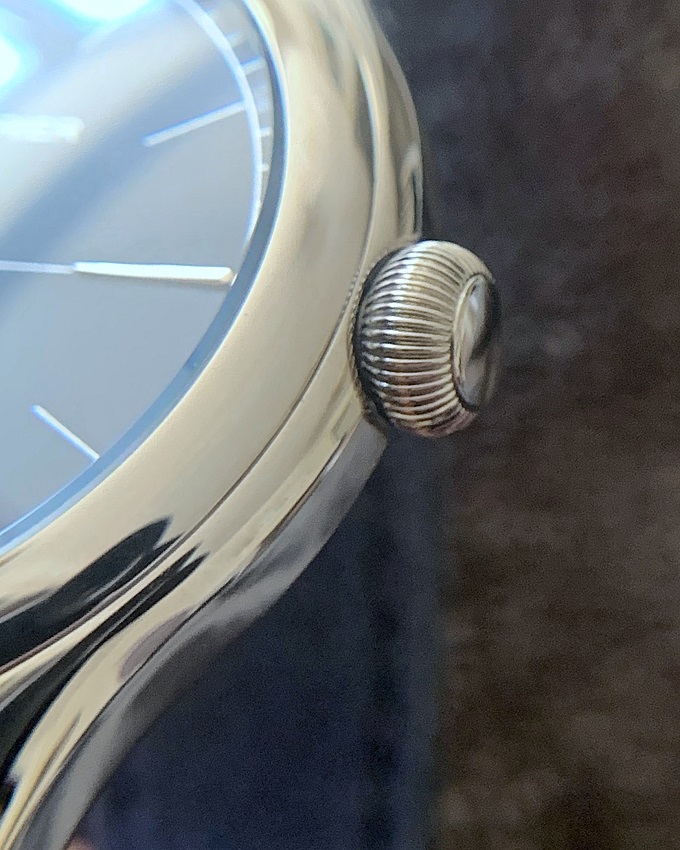
Perfectly sized and nicely decorated
The crown is, much like the small seconds dial, perfectly sized to be used as well. Sometimes I find the crowns of dressier pieces to be annoyingly small, which makes it needlessly harder to pull the crown to set the time, or grip properly to wind if you need to.
There is ample of the beautifully finished crown on the Classic Origin to grip for either reason. I found the experience of winding this watch to be one of the most satisfying I have ever had winding a watch, both audibly and to touch… as well as a perfect lead-in to looking at the manual-wind LF116.01 calibre, developed especially for the Classic Origin.
(As a side note, I do wonder if perhaps this winding experience contributed to the brand’s choice to not add a power reserve indicator – a vehicle to encourage regular winding when putting the watch on, to ensure the power does not run out!)
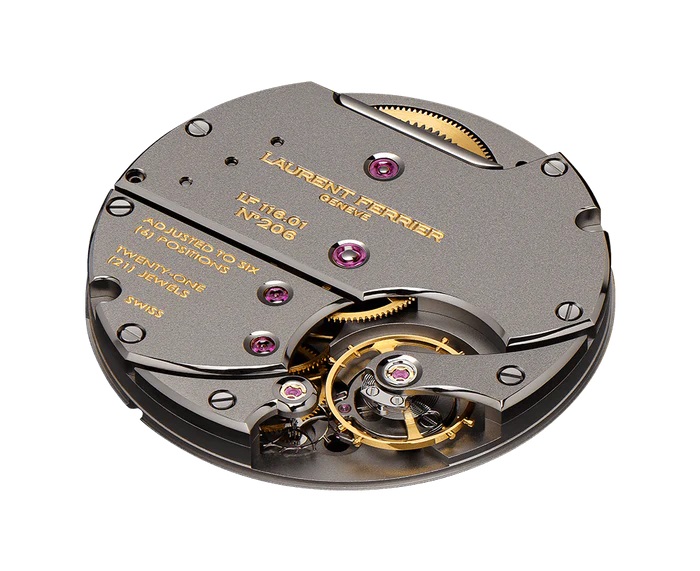
Laurent Ferrier calibre LF116.01 – photo, Laurent Ferrier
On the reverse side of the watch, the movement is visible through a perfectly sized sapphire caseback that spans the entire back of the case with a thin border of titanium. A lot of the 150-component movement is hidden from sight (maybe 80% in total?) by the sandblasted, rhodium finished plates, but there is a tantalising look at two of the key parts of the movement – the balance and the barrel.
You can see the Swiss lever escapement ticking away at the bottom of the movement when the watch springs into life, and also enjoy watching the long-blade ratchet system as you wind the watch at the top. This long-blade system is something not often found in wristwatches and is more commonly found in pocket watches, incorporated here as chosen by Mr. Ferrier himself, and serves to ensure that the ratchet wheel can only be wound in a single direction.
I have to admit, I found myself spending a lot more time than I thought I would do just winding the watches, enjoying the feel and sound of doing so and watching this system in action!
This manual-wind movement has an extensive power reserve with at least 80 hours when fully wound – I was terrified of over-winding the watch but after about 80 or 100 winds to get it fully wound, there is a noticeable resistance to let you know to stop. Obviously if you are heavy-handed and careless you could do some damage, but generally if you handle and wind the watch sensibly with a cognisance of what you’re doing, there is no real risk of accidental over-winding.
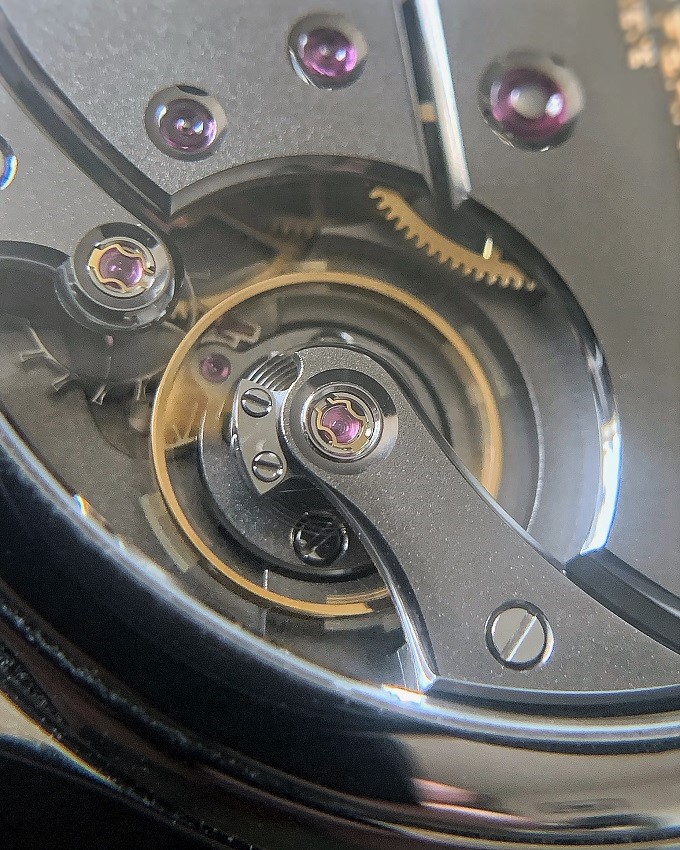
The rhodium plated bridges and balance of Laurent Ferrier's calibre LF116.01
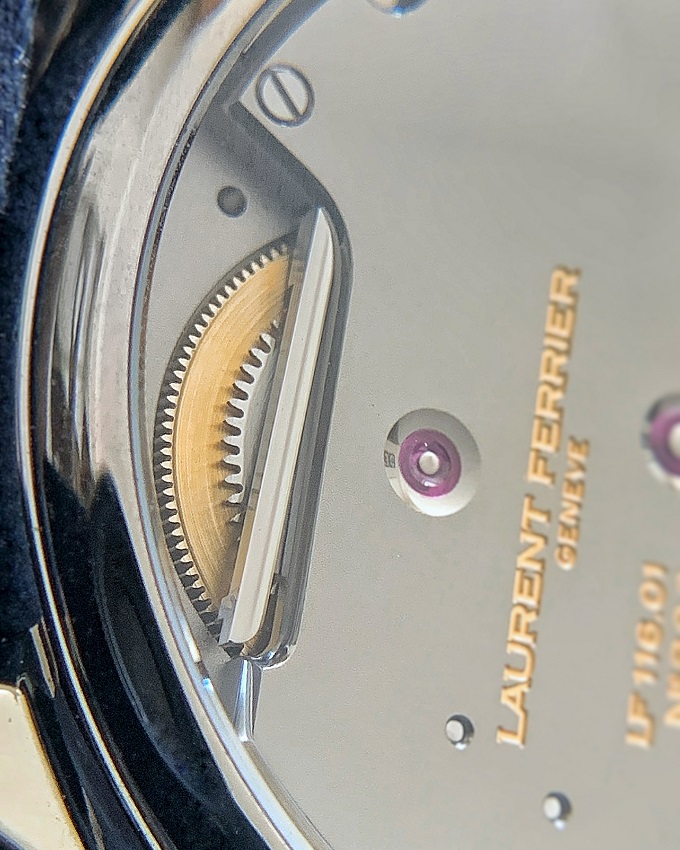
Long-blade ratchet system
It goes without saying that a movement like this is superbly finished, with hand-polished angles and edges, mirror-polished screws, graining on the gearing, and the list goes on.
The more you look, the more you find.
Even the level of attention to detail with regard to colour is not overlooked: the dark rhodium plates are inscribed with the brand name, movement number and more in the same gold colour used for other visible components, serving to ensure that you will spend as much time looking at the reverse of this watch as you do the front.
In Summary
It was a long time before I was able to see the Laurent Ferrier Classic Origin in person, and honestly, I strongly suspected that this watch would tick practically every single one of my boxes. It is perfectly classic in design, contemporary in its finish, and is the perfect size for my wrist. Not much for me to not like!
Having had the pleasure of trying the Classic Origin opaline dial and Classic Origin blue dial, I can attest this even more – for me as a person, both the Laurent Ferrier brand and the Classic Origin collection hits the nail on the head for me personally in just about every way possible, especially the blue dial, which is for sure my pick of the bunch.
The only minor gripe I could find is that it is tricky to photograph them because of reflections on the sapphire crystal, but that’s seriously nit-picking! Absolutely stunning watches – very well done, Laurent Ferrier, and I cannot wait to see how the Classic Origin collection progresses in the coming years!
If you have any questions, please get in touch via our Contact page, or via our Instagram.
You might also be interested in:
- Spotlight: Laurent Ferrier
- Laurent Ferrier Manufacture Visit
- A Watch Aficionado’s Guide to Geneva Part 1 – Watch Shopping in Geneva
- Watch Stationery and Gift Ideas
- Watch Books, Watch Boxes and more at the Watch Affinity Shop on Amazon (commissions earned)
As an Amazon Associate, I earn from qualifying purchases – thank you for your support

